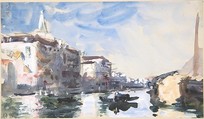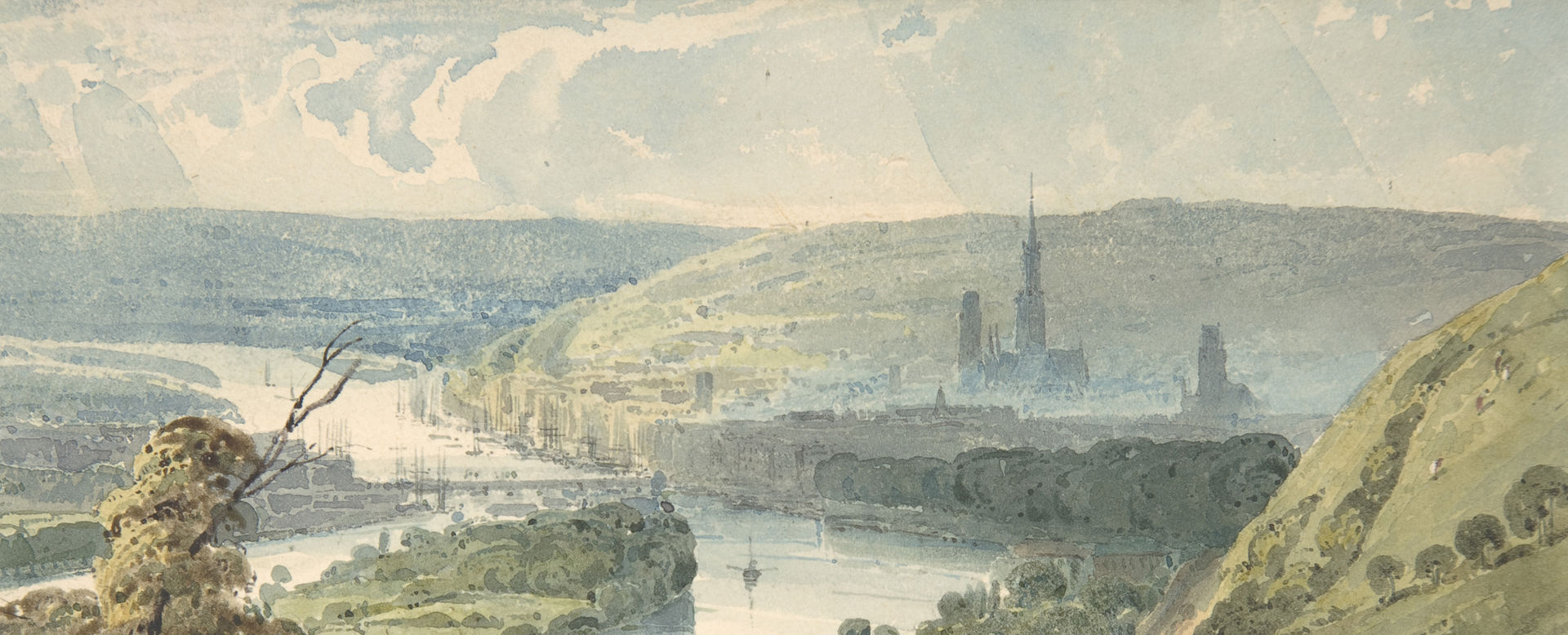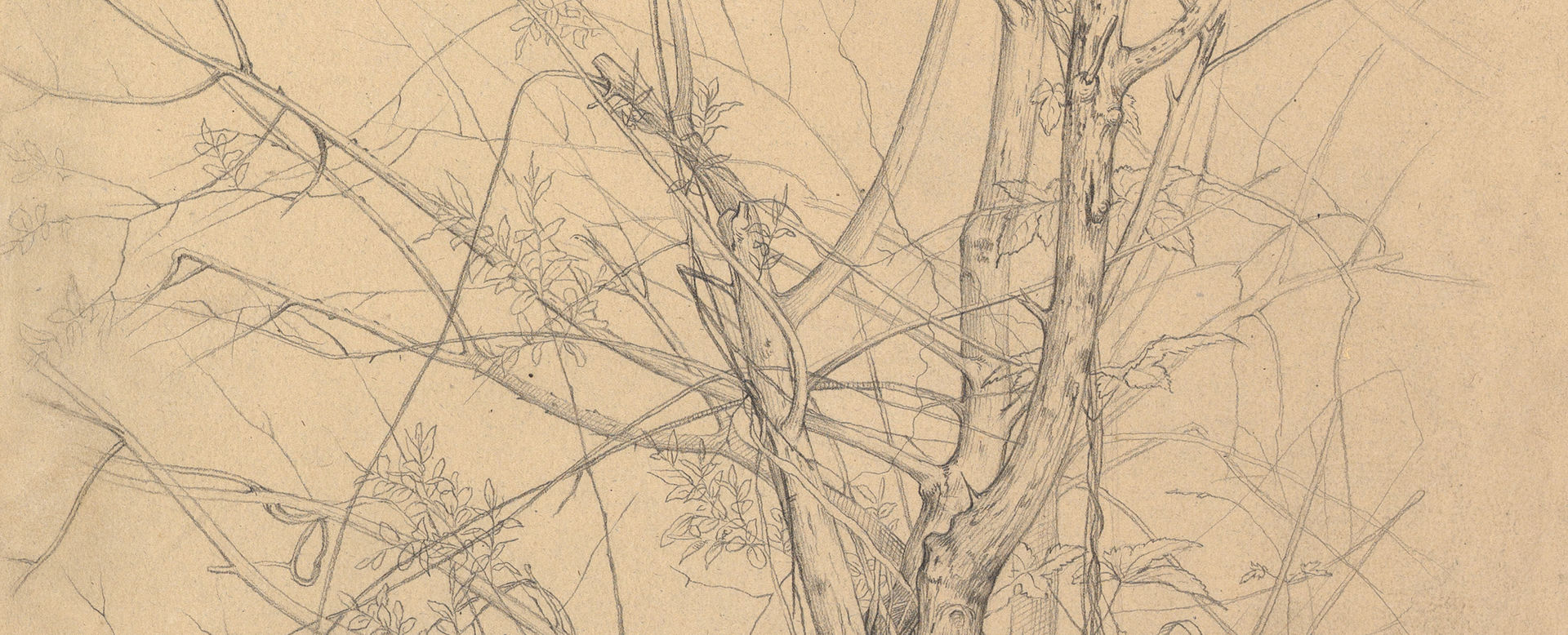Scene on the Grand Canal, Venice
Hercules Brabazon Brabazon British
Not on view
As a watercolorist, Brabazon responded to the waterways and changeable light of Venice. He looked closely at works that reponded to the city by his friend John Singer Sargent, as well as at earlier representations by J. M. W. Turner and James McNeill Whistler. Here, he records a view along the Grand Canal with the Palazzo Papadopoli at left, identified by the distinctive obelisk on its roof–the artist shows only one of what is actually a pair, and exaggerates its size. The Baroque palace was commissioned by the Coccina family from Giangiacomo dei Grigi in the mid-16th century, later owned by the Tiepolo family, then sold in 1864 to Niccolò and Angelo Papadopoli, bankers of Greek origin. Today it is a luxury hotel.
The artist was born in Paris to English parents as Hercules Brabazon Sharpe. After earning a degree in mathematics at Trinity College, Cambridge, he moved to Rome to study art and music. This went against his father's determination that he should pursue law and forced him to lived on the edge of poverty until the death of an elder brother in 1847. He then inherited the Irish estate of a wealthy uncle, whose will stipulated that he change his last name to Brabazon. Now free to pursue art, the artist traveled widely and developed into a skilled watercolorist. Seeing himself as a gentleman amateur, however, he resisted public exhibition until 1891. When elected to the New English Art Club that year, he felt obliged to submit works to the club's winter and summer shows. Sargent and other friends then persuaded him to agree to hold a one-man exhibition at the Goupil Gallery on Bond Street in 1892. Many works sold and the resulting acclaim encouraged further exhibitions, concluding with a memorial display in 1905.
This image cannot be enlarged, viewed at full screen, or downloaded.



